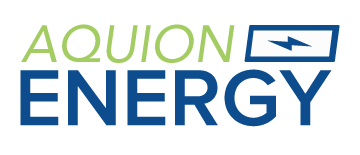5 Major Challenges In Solar Energy Development
Have you ever wondered why solar energy, despite all its potential, has not become a universally adopted solution?
As great as it sounds, using the sun to provide electricity, the journey to widely utilizing sun power is riddled with obstacles.
Contents
The road to full solar power is anything but smooth, from technological challenges to economic barriers that stand in the way. Issues such as storage, efficiency, and huge investment requirements in infrastructure are major obstacles in scaling up solar energy to meet demand worldwide.
Besides, geographical limitations and regulatory bottlenecks in many regions create a barrier to better implementation of solar power.
Understanding these roadblocks helps explain better how much cleaner renewable energy solutions can take the world forward.
Curious to know more?
Continue reading to discover the five big challenges facing solar energy development today.
1. Intermittency And Reliability of Solar Power
One of the issues facing the solar industry today is the challenge of intermittency.
Solar power generation entirely depends on sunlight, which varies depending on time, seasons, and weather conditions. The changes in solar radiation make solar energy unavailable 24/7.
That is why such a power source is considered very unreliable for you. However, there is always hope.
This challenge can be addressed by investing in lithium-ion batteries to store excess energy from sunny days for use at night or during cloudy weather.
Modernizing the grid into an intelligent grid allows a balance of solar energy with other on-tap energy sources that automatically adjust when the amount of solar power fluctuates.
On the other hand, this also includes a mix of other renewables like solar and wind power, which will stabilize and securely obtain supply for you and your community.
2. High Upfront Costs
One of the major drawbacks you may face in switching over to solar energy is the high initial cost, which also stands as a significant drawback.
Indeed, the prices of solar panels have decreased over the years. However, this investment you have to make in buying and installing a solar system remains a burden, especially for developing countries or even for those homeowners who have stringent budgets.
But you can cut these costs on your own. Government incentives can also enhance the adoption of solar energy by providing tax credits and rebates on the total investment cost required for any solar system installation.
You may also look into financing options, such as a power purchase agreement, leasing, or pay-per-use, that will have you installing the solar panel without paying for the upfront cost.
As long as technology keeps on improving, it is bound that the price of solar systems will continue to decrease.
Innovations in manufacturing processes, along with increased scales of production, are making solar energy more available and much cheaper for you and others far into the future.
3. Land Use And Space Requirements
Talking of the issues one will have to deal with in trying to generate large-scale solar energy, the use of land becomes rather critical.
Solar farms take huge expanses of area to produce substantial quantities of energy. This, in turn, may conflict with other land uses, such as agriculture, housing, or conservation.
However, solutions exist that can better utilize the available space. Rooftop solar installations are the most promising way to reduce land-use conflict.
For example, you can benefit from using unutilized spaces, mainly within urban areas, to generate solar power. Agrivoltaics is another innovative approach that involves the installation of solar panels above agricultural land.
The growth of crops can be carried out under the panels, and electricity generation will co-occur.
Finally, there is the floating solar farm, fitted on water bodies- a different alternative for countries with limited land availability, reducing the pressure to be placed on land-based solar installations.
4. Manufacturing And Supply Chain Issues
In the development of solar energy, there is great concern about the chain supply and materials, namely silicon, lithium, and rare earth metals, whose supply is likely to get erratic either in price or a full stop in supplies altogether.
To mitigate this risk, one can create diversity in the supply chain by sourcing materials from various regions. This may reduce reliance on one source.
Additionally, offering services related to recycling old panels can alleviate raw material demand.
Other research using alternative materials, such as perovskite solar cells, may even further reduce the consumption of rare resources and hence provide more sustainability to solar energy with less vulnerability to supply-chain disruptions.
5. Grid Integration And Infrastructure Challenges
Solar adoption to the grid is difficult as traditional grids were designed for a centralized, stable power source, such as coal.
Furthermore, solar energy is decentralized and intermittent, thus requiring a significant upgrade of the grid.
Upgrading the grid with innovative technology is an increasingly adept use of sensors and data in real time to make adjustments in supplies and demand.
It is an isolated microgrid but capable of functioning independently inside the traditional grid-ideal solutions for remote areas or communities.
Energy storage will further help dampen the variability in solar generation, making continuity and steady power supply possible whenever the elements of solar generation are at their lowest, hence making the grid resilient.
Conclusion
While solar energy has enormous potential, it equally has a variety of drawbacks, including intermittency, high upfront cost, land-use problems, and supply chain concerns.
With continuing technological improvements, smarter grid integration, and creative land-use strategies, solar power can continue playing a key part in shaping a cleaner and more sustainable energy-based future.
Tapping the full potential of the sun is a long journey; however, it is very promising for the future.

